Participants
 Thecla Schiphorst is Director and Professor in the School of Interactive Arts and Technology at Simon Fraser University in Vancouver, Canada. Her background in dance and computing form the basis for her research in embodied interaction, focusing on movement knowledge representation, tangible and wearable technologies, media and digital art, and the aesthetics of interaction.
Thecla Schiphorst is Director and Professor in the School of Interactive Arts and Technology at Simon Fraser University in Vancouver, Canada. Her background in dance and computing form the basis for her research in embodied interaction, focusing on movement knowledge representation, tangible and wearable technologies, media and digital art, and the aesthetics of interaction.
https://www.sfu.ca/~tschipho/
http://www.movingstories.ca/
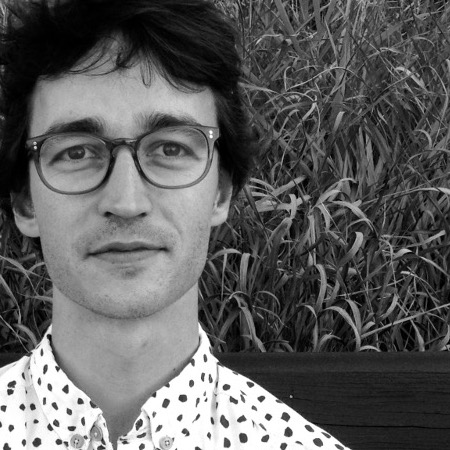 Jules Françoise is a postdoctoral fellow in Human-Computer Interaction at Simon Fraser University (SFU) in Vancouver. His research interests intersect HCI and machine learning for expressive movement analysis and modelling. In particular, he is interested in understanding how continuous multimodal feedback (in particular involving auditory feedback) can support movement learning and expression.
Jules Françoise is a postdoctoral fellow in Human-Computer Interaction at Simon Fraser University (SFU) in Vancouver. His research interests intersect HCI and machine learning for expressive movement analysis and modelling. In particular, he is interested in understanding how continuous multimodal feedback (in particular involving auditory feedback) can support movement learning and expression.
https://www.julesfrancoise.com/
http://movementcomputing.org/
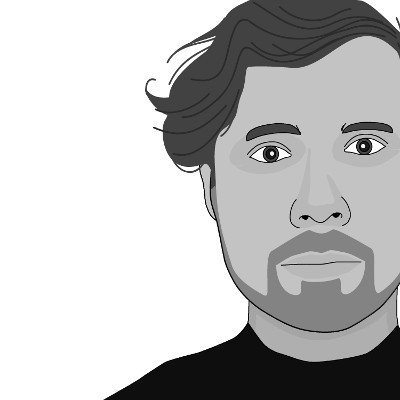 Philippe Pasquier is Associate Professor at Simon Fraser University's School of Interactive Arts and Technology. He is both a scientist specialized in artificial intelligence and a multi-disciplinary artist. His contributions range from theoretical research in artificial intelligence, multi-agent systems and machine learning to applied artistic research and practice in digital art, computer music, and generative art.
Philippe Pasquier is Associate Professor at Simon Fraser University's School of Interactive Arts and Technology. He is both a scientist specialized in artificial intelligence and a multi-disciplinary artist. His contributions range from theoretical research in artificial intelligence, multi-agent systems and machine learning to applied artistic research and practice in digital art, computer music, and generative art.
http://philippepasquier.com/
http://www.Metacreation.net
http://MusicalMetacreation.org
https://www.kadenze.com/programs/generative-art-and-computational-creativity
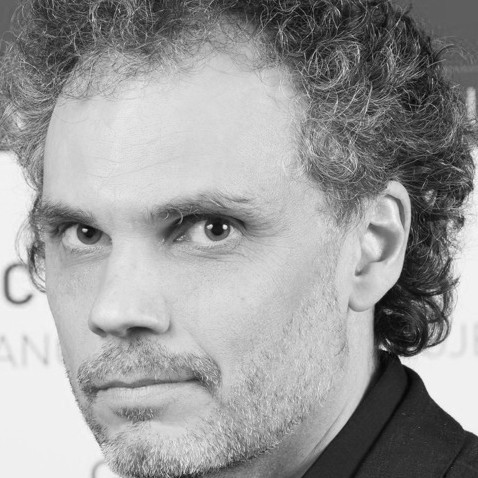 Frédéric Bevilacqua is the head of the Sound Music Movement Interaction team at IRCAM in Paris. His research concerns the modeling and the design of interaction between movement and sound, and the development of gesture-based interactive systems.
Frédéric Bevilacqua is the head of the Sound Music Movement Interaction team at IRCAM in Paris. His research concerns the modeling and the design of interaction between movement and sound, and the development of gesture-based interactive systems.
http://frederic-bevilacqua.net/
http://ismm.ircam.fr
Projects (Past/Current):
http://rapidmix.goldsmithsdigital.com/
http://cosima.ircam.fr/home/
http://legos.ircam.fr/
http://skatvg.iuav.it/
http://www.smart-labex.fr/ISMES.html and
http://www.smart-labex.fr/SeNSE.html
Future Project:
Collaboration with http://motionbank.org/
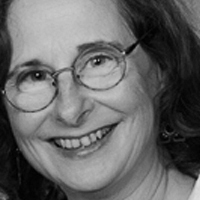 Karen Kohn Bradley CMA is a LIMS® Certified Movement Analyst, and is currently the Director of Graduate Studies in Dance, and Head of Dance at the University of Maryland, College Park. She studies the nonverbal and movement behaviors of political leaders, coaches actors and dancers, writes, directs, and choreographs politically oriented performance pieces, choreographs for theatre, and researches and writes about dance education issues.
Karen Kohn Bradley CMA is a LIMS® Certified Movement Analyst, and is currently the Director of Graduate Studies in Dance, and Head of Dance at the University of Maryland, College Park. She studies the nonverbal and movement behaviors of political leaders, coaches actors and dancers, writes, directs, and choreographs politically oriented performance pieces, choreographs for theatre, and researches and writes about dance education issues.
Professional Affiliations: President and Director of Research, Laban/Bartenieff Institute of Movement Studies, former Government Affairs Liaison, National Dance Education Organization, former President, Congress on Research in Dance.
http://tdps.umd.edu/faculty/karen-bradley
http://www.limsonline.org/
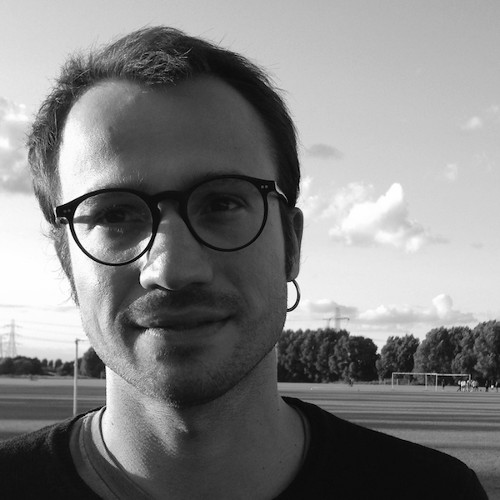 Baptiste Caramiaux is a Marie Skłodowska-Curie Research Fellow in Human-Computer Interaction (HCI) at McGill University (Montreal) and IRCAM (Paris). His research focuses on interactive technology for motor skill acquisition involving methods from psychology and machine learning. He holds a PhD from University Pierre & Marie Curie in Paris and IRCAM.
Baptiste Caramiaux is a Marie Skłodowska-Curie Research Fellow in Human-Computer Interaction (HCI) at McGill University (Montreal) and IRCAM (Paris). His research focuses on interactive technology for motor skill acquisition involving methods from psychology and machine learning. He holds a PhD from University Pierre & Marie Curie in Paris and IRCAM.
http://www.baptistecaramiaux.com
Relevant projects:
Role of Tempo Variability on Skill Learning:
http://baptistecaramiaux.com/projects.html#tempovariability
Gesture Variation Following (GVF): Algorithm and Applications:
http://baptistecaramiaux.com/projects.html#variationfollower
Understanding Gesture Expressivity through Muscle Sensing:
http://baptistecaramiaux.com/projects.html#gestureexpressivity
Form Follows Sound: Workshops on Sonic Interaction Design:
http://baptistecaramiaux.com/projects.html#ffs
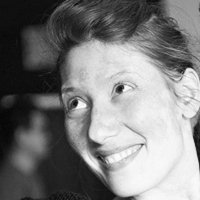 Kristin Carlson is an Assistant Professor in the Arts Technology Program at Illinois State University, exploring the role that computation plays in embodied creative processes. Kristin holds a PhD from the School of Interactive Arts and Technology from Simon Fraser University. She has a history of working in choreography, computational creativity, media performance, interactive art and design tools due to her background in movement, technical theater, interaction design and programming. Kristin holds an AmSat certification in Alexander Technique and is finishing a certification in Laban Movement Analysis.
Kristin Carlson is an Assistant Professor in the Arts Technology Program at Illinois State University, exploring the role that computation plays in embodied creative processes. Kristin holds a PhD from the School of Interactive Arts and Technology from Simon Fraser University. She has a history of working in choreography, computational creativity, media performance, interactive art and design tools due to her background in movement, technical theater, interaction design and programming. Kristin holds an AmSat certification in Alexander Technique and is finishing a certification in Laban Movement Analysis.
https://kristinannecarlson.com/
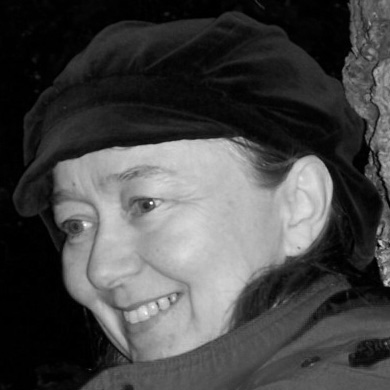 Sheelagh Carpendale is a Professor in the Department of Computer Science at the University of Calgary where she holds a Canada Research Chair in Information Visualization and NSERC/AITF/SMART Technologies Industrial Research Chair in Interactive Technologies. Her research on information visualization, large interactive displays, and new media draws on her background in Computer Science, Art and Design (Simon Fraser University, Emily Carr, Institute of Art and Design, Sheridan College, School of Design). She has found the combined visual arts and computing science background invaluable in her information visualization research.
Sheelagh Carpendale is a Professor in the Department of Computer Science at the University of Calgary where she holds a Canada Research Chair in Information Visualization and NSERC/AITF/SMART Technologies Industrial Research Chair in Interactive Technologies. Her research on information visualization, large interactive displays, and new media draws on her background in Computer Science, Art and Design (Simon Fraser University, Emily Carr, Institute of Art and Design, Sheridan College, School of Design). She has found the combined visual arts and computing science background invaluable in her information visualization research.
http://pages.cpsc.ucalgary.ca/~sheelagh/wiki/pmwiki.php
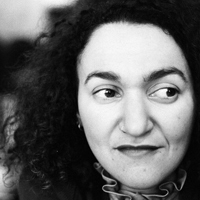 Sarah Fdili Alaoui is an associate professor at LRI-Université Paris-Sud in Human Computer Interaction and interactive arts. She is also choreographer, a dancer and a Laban Movement Analyst. She was a researcher at SIAT SFU within the MovingStories project. She holds a PhD in Art and Science from University Paris-Sud and IRCAM, an MSc from University Joseph Fourier and ENSIMAG in Applied Mathematics and over 20 years of training in dance. Sarah collaborates with dancers and choreographers to create interactive installations, performances and tools for supporting choreography.
Sarah Fdili Alaoui is an associate professor at LRI-Université Paris-Sud in Human Computer Interaction and interactive arts. She is also choreographer, a dancer and a Laban Movement Analyst. She was a researcher at SIAT SFU within the MovingStories project. She holds a PhD in Art and Science from University Paris-Sud and IRCAM, an MSc from University Joseph Fourier and ENSIMAG in Applied Mathematics and over 20 years of training in dance. Sarah collaborates with dancers and choreographers to create interactive installations, performances and tools for supporting choreography.
http://saralaoui.com/
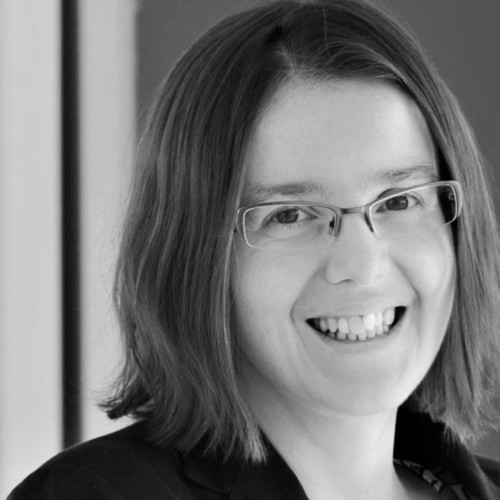 Dana Kulić is an Associate Professor with the Department of Electrical and Computer Engineering, University of Waterloo, Waterloo, ON, Canada. Her research interests include human motion analysis, robot learning, humanoid robots, and human–machine interaction.
Dana Kulić is an Associate Professor with the Department of Electrical and Computer Engineering, University of Waterloo, Waterloo, ON, Canada. Her research interests include human motion analysis, robot learning, humanoid robots, and human–machine interaction.
https://ece.uwaterloo.ca/~dkulic/
http://livingarchitecturesystems.com/
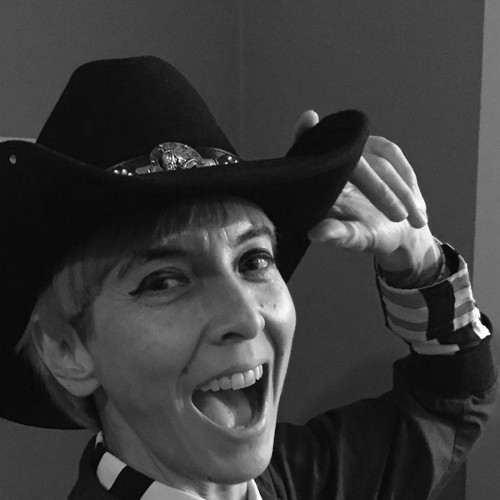 Lian Loke is a senior lecturer and interaction design researcher in the Design Lab, University of Sydney. She is interested in the transdisciplinary nature of the body, the aesthetics of interaction and the impact of new technologies on how we formulate, enact and express our sense of embodied selves. Her research works with dance and somatic practices to explore choreographic possibilities and to inform the design and experience of body and movement-based interactive technologies, most recently with Bodyweather and Feldenkrais.
Lian Loke is a senior lecturer and interaction design researcher in the Design Lab, University of Sydney. She is interested in the transdisciplinary nature of the body, the aesthetics of interaction and the impact of new technologies on how we formulate, enact and express our sense of embodied selves. Her research works with dance and somatic practices to explore choreographic possibilities and to inform the design and experience of body and movement-based interactive technologies, most recently with Bodyweather and Feldenkrais.
http://www.lianloke.com/
 Sylvain Moreno is Director of the Digital Health Hub, School of Engineering, Simon Fraser University and Assistant Professor Adjunct, Department of Neuroscience at York Universty. Dr. Moreno’s research program focuses specifically on brain plasticity and its implications for neuroeducation and neurorehabilitation. Dr. Moreno has been the recipient of many awards from national and international organizations and his work has been featured in various media outlets including newspaper and television.
Sylvain Moreno is Director of the Digital Health Hub, School of Engineering, Simon Fraser University and Assistant Professor Adjunct, Department of Neuroscience at York Universty. Dr. Moreno’s research program focuses specifically on brain plasticity and its implications for neuroeducation and neurorehabilitation. Dr. Moreno has been the recipient of many awards from national and international organizations and his work has been featured in various media outlets including newspaper and television.
https://www.sfu.ca/~sylvainm/
http://canadadhh.com/
 Marcelo M. Wanderley is Full Professor of Music Technology at McGill University, Canada, and International Chair at Inria Lille, France. His research interests include the design and evaluation of digital musical instruments and the analysis of performer movements. He is a senior member of the ACM and of the IEEE.
Marcelo M. Wanderley is Full Professor of Music Technology at McGill University, Canada, and International Chair at Inria Lille, France. His research interests include the design and evaluation of digital musical instruments and the analysis of performer movements. He is a senior member of the ACM and of the IEEE.
http://www.idmil.org
http://cirmmt01.businesscatalyst.com/mmr.html (CFI-funded new infrastructure "Live Expression 'in situ': Musical and Audiovisual Performance and Reception")
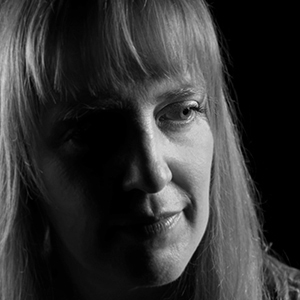 Norah Zuniga Shaw's artwork and scholarship focuses on choreographic ideas as catalysts for interdisciplinary and intercultural creativity. Since 2004, Shaw has been Director for Dance and Technology at The Ohio State University Department of Dance and Advanced Computing Center for the Arts and Design (ACCAD) where she is a Professor and teaches courses in interdisciplinary research and composition, intermedia theater, critical theories of the body, embodied digital literacy, and dance improvisation.
Norah Zuniga Shaw's artwork and scholarship focuses on choreographic ideas as catalysts for interdisciplinary and intercultural creativity. Since 2004, Shaw has been Director for Dance and Technology at The Ohio State University Department of Dance and Advanced Computing Center for the Arts and Design (ACCAD) where she is a Professor and teaches courses in interdisciplinary research and composition, intermedia theater, critical theories of the body, embodied digital literacy, and dance improvisation.
https://dance.osu.edu/people/zuniga-shaw.1
http://degreesofunison.org/
 Lyn is an assistant professor in the School of Interactive Art and Technology at SFU, where she is a co-founder and Director of the HVILab. Her theoretical research interests span perception, computational aesthetics and design principles – all applied to information visualization and human-computer interaction. In particular she is interested in how the rich visual modality of motion and animation can be used in information visualization and affective interfaces.
Lyn is an assistant professor in the School of Interactive Art and Technology at SFU, where she is a co-founder and Director of the HVILab. Her theoretical research interests span perception, computational aesthetics and design principles – all applied to information visualization and human-computer interaction. In particular she is interested in how the rich visual modality of motion and animation can be used in information visualization and affective interfaces.
https://www.sfu.ca/~lyn/
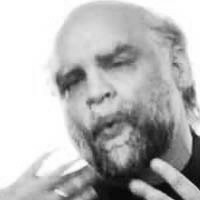 Steve DiPaola, active as an artist and a scientist is director of the Cognitive Science Program at Simon Fraser University, and leads the iVizLab (ivizlab.sfu.ca), a research lab that strives to make computational systems bend more to the human experience by incorporating biological, cognitive and behavior knowledge models.
Steve DiPaola, active as an artist and a scientist is director of the Cognitive Science Program at Simon Fraser University, and leads the iVizLab (ivizlab.sfu.ca), a research lab that strives to make computational systems bend more to the human experience by incorporating biological, cognitive and behavior knowledge models.
http://www.dipaola.org/
http://dipaola.org/lab/
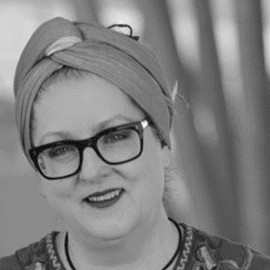 Dr. Diane Gromala, PhD, directs the Pain Studies Lab and the Chronic Pain Research Institute. Dr. Gromala is a Canada Research Chair and a Professor in the Simon Fraser University’s School of Interactive Arts and Technology (SIAT). Her research works at the confluence of computer science, media art and design, and has focused on the cultural, visceral, and embodied implications of digital technologies, particularly in the realm of chronic pain.
Dr. Diane Gromala, PhD, directs the Pain Studies Lab and the Chronic Pain Research Institute. Dr. Gromala is a Canada Research Chair and a Professor in the Simon Fraser University’s School of Interactive Arts and Technology (SIAT). Her research works at the confluence of computer science, media art and design, and has focused on the cultural, visceral, and embodied implications of digital technologies, particularly in the realm of chronic pain.
http://painstudieslab.com/dr-diane-gromala/
http://painstudieslab.com/
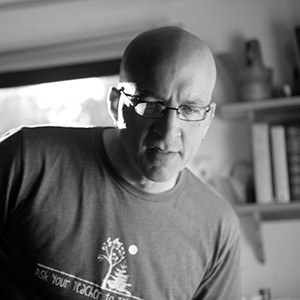 Athomas Goldberg is the president of Lifelike & Believable Animation Design, where he consults for leading developers in the video game and interactive media industries on the subject of believable character motion and behavior. He is also a founding member of the Vancouver-based Pepper’s Ghost New Media & Performing Arts Collective, where he is exploring the expressive potential of advanced computer graphics, digital audio and visual effects technologies, including real-time motion capture, stereo 3D projection, electronic sound synthesis and virtual & augmented reality, in the creation of live theatre, music and dance performances.
Athomas Goldberg is the president of Lifelike & Believable Animation Design, where he consults for leading developers in the video game and interactive media industries on the subject of believable character motion and behavior. He is also a founding member of the Vancouver-based Pepper’s Ghost New Media & Performing Arts Collective, where he is exploring the expressive potential of advanced computer graphics, digital audio and visual effects technologies, including real-time motion capture, stereo 3D projection, electronic sound synthesis and virtual & augmented reality, in the creation of live theatre, music and dance performances.
http://www.lifelikeandbelievable.com/
http://www.peppersghost.org/
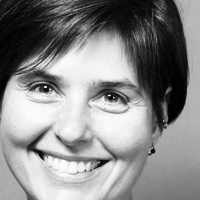 Maria Lantin is the Director of the Stereoscopic 3D Centre at Emily Carr University of Art + Design. She has a deep interest in space and movement both physical and metaphorical, and this is woven through her work in immersive media and interaction.
Maria Lantin is the Director of the Stereoscopic 3D Centre at Emily Carr University of Art + Design. She has a deep interest in space and movement both physical and metaphorical, and this is woven through her work in immersive media and interaction.
http://www.marialantin.com
http://research.ecuad.ca/s3dcentre/
 Associate Professor Bernhard Riecke combines multidisciplinary research approaches and immersive virtual environments to investigate what constitutes effective, robust, embodied and intuitive human spatial cognition, orientation and behaviour as well as presence/immersion. He applies this to design more embodied and effective human-computer interactions, for example to give users a glimpse of the “overview effect”, an awareness shift experienced by astronauts when they see the Earth from space and realize how fragile it is.
Associate Professor Bernhard Riecke combines multidisciplinary research approaches and immersive virtual environments to investigate what constitutes effective, robust, embodied and intuitive human spatial cognition, orientation and behaviour as well as presence/immersion. He applies this to design more embodied and effective human-computer interactions, for example to give users a glimpse of the “overview effect”, an awareness shift experienced by astronauts when they see the Earth from space and realize how fragile it is.
http://ispace.iat.sfu.ca/riecke/
http://ispace.iat.sfu.ca/project/earthgazing/
http://ispace.iat.sfu.ca/project/pulse-breath-water/
http://ispace.iat.sfu.ca/project/transition2vr/
http://ispace.iat.sfu.ca/project/cross-disciplinary-immersion-framework/